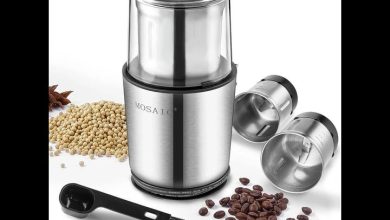The Ultimate Guide to Choosing a Motorized Wheelchair for Disability in 2024

Mobility devices like electrical wheelchairs and mobility scooters are go-to tools that can help people with diseases or partial movement preserve their freedom.Thanks to modern technology, you can buy an electric mobility device prepared with lots of handy features, including adjustable parts, a foot rest, an elevating seat, and much more.
The key when choosing one lies in thoughtful the main differences between powered chairs and mobility scooters. You should know how to evaluate your specific needs and priorities when it comes to such an important conclusion in your life.
This article frames the main features to look for when choosing an electric medical aid.
- Key differences between electric wheelchairs nz and mobility scooters
- Major types of mobility scooters and electric wheelchairs
- Factors to consider when choosing between electric wheelchair vs mobility scooter
Most constructors will not sell power wheelchairs to patrons, but would rather utilize a dealer, like us, who sells them to the end-user, which is you. If you don’t do research or have some basic knowledge about the product that you are going to buy, you could end up with a product that doesn’t suit your needs.
Difference between electric wheelchair and mobility scooter
Key differences between electric wheelchairs and mobility scooters
An electric wheelchair usually comes with a chair-like seat and a backrest. At the same time, a mobility scooter boasts a seat with a tiller for steering control. Powered wheelchairs tend to have a smaller turning radius, and such vehicles are more pilotable than scooters.
However, electric scooters for people with inadequate mobility excel at outdoor use with greater range and speed. Such devices have the capacity to handle rough terrain with larger wheels and fat tires.
In terms of size and transferability, electric wheelchairs are more customisable to user size. They can accommodate a variety of postures due to the device’s solid adjustability. You’re likely to find a power chair designed with accessories like leg rests, seat belts, and adjustable back/head rests. A motorized wheelchair is travel-friendly, so you can easily transport them in a trunk while on the go.
Mobility scooters have less adjustability, but they can be disassembled into insubstantial pieces for transport. Scooter constructors usually design their mobility devices so that they can be easily amassed/stripped at home without an extra hand.
Comparison chart
| Key features | Electric wheelchair | Mobility scooter |
| Turning radius | Excellent | Good |
| Outdoor use | Challenging | Excellent |
| Transfers | Easier | More difficult |
| Terrain restrictions | Fewer | More |
| Insurance coverage | Varies | Varies |
Their are the Major types of mobility scooters and electric wheelchairs:
Electric wheelchair types
- There are three main outlines of electric chairs – rear-wheel drive, mid-wheel drive, and front-wheel drive mock-ups.
- Rear-wheel drive electric wheelchairs with larger powered wheels at the back. This provides excellent traction and torque for climbing hills and handling rougher terrain outdo
- Mid-wheel drive models offer a tighter turning radius. They boast powered center wheels below the user’s center of gravity, which is ideal for navigating tight indoor spaces.
- Front-wheel drives tend to be lighter, more movable and mimic the mobility involvement of blue-collar chairs, but lack stability descendent slants.
In addition to drive wheel configuration, powered wheelchairs range greatly in size, seat dimensions, turning radius, customisation accessories, and user weight capacities.
Mobility scooter types
For mobility scooters, key factors include overall size, degree of transportability, seat comfort, handlebar adjustability, turning capabilities, and if a lift is needed for vehicle transport. The most portable travel scooters have a trivial three-wheel design with quick dismantling, needing no tools that can fit trunks for easy transport. They classically lever briefer driving series under 15 heaps per charge.
Larger mobility scooters with heavy, semi-portable pieces tend to stay stationary. They offer supported luxury for plus sizes as well as extensive turns. These remain popular for older adults needing steadiness, specially mounting/dismounting the mobility scooter. While the heaviest, such a mobility device offers safe and fully self-governing public mobility at protracted ranges.
Conclusion
Choosing between an electric wheelchair and a mobility scooter anxieties an authentic appraisal of multiple factors, from physical capabilities to typical usage. Outline these considerations against key feature judgments between both mobility device options. Seek input from both therapeutic providers and experienced vendors. Prioritize criteria most vital to maintaining independence and exploiting funding support options.





